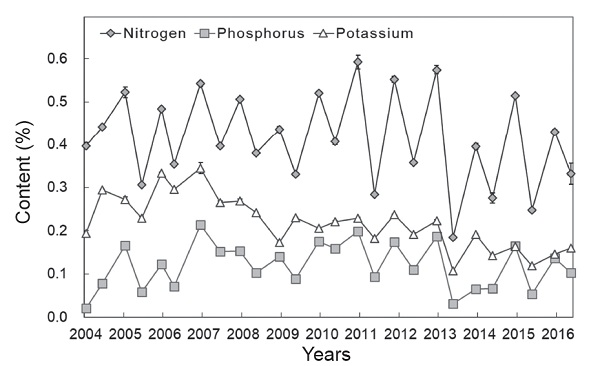Current issue

Author:Hsi-Chia Wu, Chia-Jen Liu, Ya-Hui Shih, Min-Chieh Lin, Chung-Yi Liao, and Chi-Ling Chen*
Abstract:
Livestock wastewater for farmland application has been permitted in Taiwan since 2011. However, concerns remain regarding the potential accumulation of heavy metals in the soil. This study presents findings from a 19-year monitoring period (2004–2023), comparing the effects of applying equivalent amounts of nitrogen, phosphorus, and potassium through chemical fertilizers and swine wastewater. The results showed that long-term irrigation with pig wastewater had little effect on soil pH and electrical conductivity (EC), but it gradually increased the soil organic matter content. Copper from the wastewater accumulated in the soil, with an increase of approximately 6 mg kg-1 compared to pre-treatment levels, whereas zinc primarily accumulated in rice straw. Based on a mass balance approach and applying 85% of Taiwan’s soil contamination monitoring standards for food crop land as the upper threshold, the estimated safe land use duration can exceed 100 years if the N/Cu and N/Zn ratios in the wastewater are above 180 and 360, respectively. Moreover, reducing the copper and zinc input at the source- namely through feed formulation- can further prolong the period during which livestock wastewater can be safely applied to farmland.
Key words:Copper, Zinc, Farmland reuse, Oryza sativa
Download:![]() PDF Links
PDF Links
 Submit your manuscript
Submit your manuscript
 Guide for authors
Guide for authors